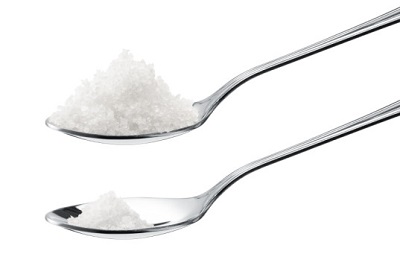
In the quest to eat healthy, many people are looking to lower the amount of sodium in their diets. It’s not easy to do because so many foods contain sodium. And, salt, an important source of sodium, helps make foods taste good.
But salt isn’t our only option for enhancing flavors. MSG (monosodium glutamate) can add umami to foods and enhance flavors. That means it can lower the overall sodium content of foods while keeping them flavorful.
What is umami
Umami is the delicious savory flavor we experience when we eat foods containing free glutamate. Glutamate is an amino acid found in a wide variety of foods. It is also naturally produced by the human body. When it is “free” – not attached to other amino acids in the form of a protein – it leads the taste buds to signal umami. This results in a savory sensation that tastes like meatiness and gives a full mouth feel.
Where is umami
Umami is found in a vast number of foods, especially seafood, meat, nuts, and vegetables. Sauces like soy sauce, fish sauce and miso paste are rich in it. Ripening, aging, or fermenting foods increases their umami levels. MSG, the purest form of umami, can be used as a seasoning to add umami to foods.
Umami and healthy eating
 Umami is an important component of the diet because it tastes good, favorably affects the mouthfeel of food, and enhances the flavors in a food. It can be used to add meatiness to meatless dishes. And it can make vegetables more palatable.
Umami is an important component of the diet because it tastes good, favorably affects the mouthfeel of food, and enhances the flavors in a food. It can be used to add meatiness to meatless dishes. And it can make vegetables more palatable.
Umami from MSG is safe to eat. MSG is one of the most extensively researched substances in the food supply and has repeatedly been shown to be safe. Our bodies can’t tell the difference between glutamate from MSG, glutamate from other foods, or the glutamate it produces.
MSG contains much less sodium than salt
Although sodium may be in MSG’s name (monosodium glutamate), it doesn’t include very much sodium. In fact, salt contains three times more sodium than MSG (39% vs 12%, per the USDA nutrient database). The same goes for other umami rich foods. For example, a teaspoon of soy sauce, which is mostly glutamate, has 87% less sodium than a teaspoon of salt.
Using umami to reduce sodium
 When MSG is used along with a small amount of table salt, it can reduce the total sodium in a recipe by 20% to 40% while still maintaining the desired flavor.
When MSG is used along with a small amount of table salt, it can reduce the total sodium in a recipe by 20% to 40% while still maintaining the desired flavor.
Several studies have found that MSG can help reduce Americans’ sodium intake. One recent study (published in the September 2020 Journal of Food Science) showed that most of the participants liked low-salt recipes with MSG added the same or better than the standard recipe. Another study (published in the Journal of Food & Nutrition Research) found that by adding MSG, it was possible to lower the sodium level of a soup without changing how tasty people found it.
The amount of sodium in any given dish will vary based on type of umami seasoning used (MSG, soy sauce, umami rich broths/stocks, etc.), the amount used, and the type of food to which it’s being added.
Consider using MSG to lower the sodium in meat and vegetable dishes because it enhances their rich, savory flavors. MSG works well with salty and sour tastes, but adds little or nothing to sweet or bitter foods.
For the home chef, about ½ teaspoon of MSG is recommended for a pound of meat or for a dish that serves 4-6 people. Once a good flavor is achieved, adding more MSG won’t improve the taste further.
Overall, small amounts of seasonings high in umami and low in salt allow for dishes that taste just as good but are lower in sodium.

